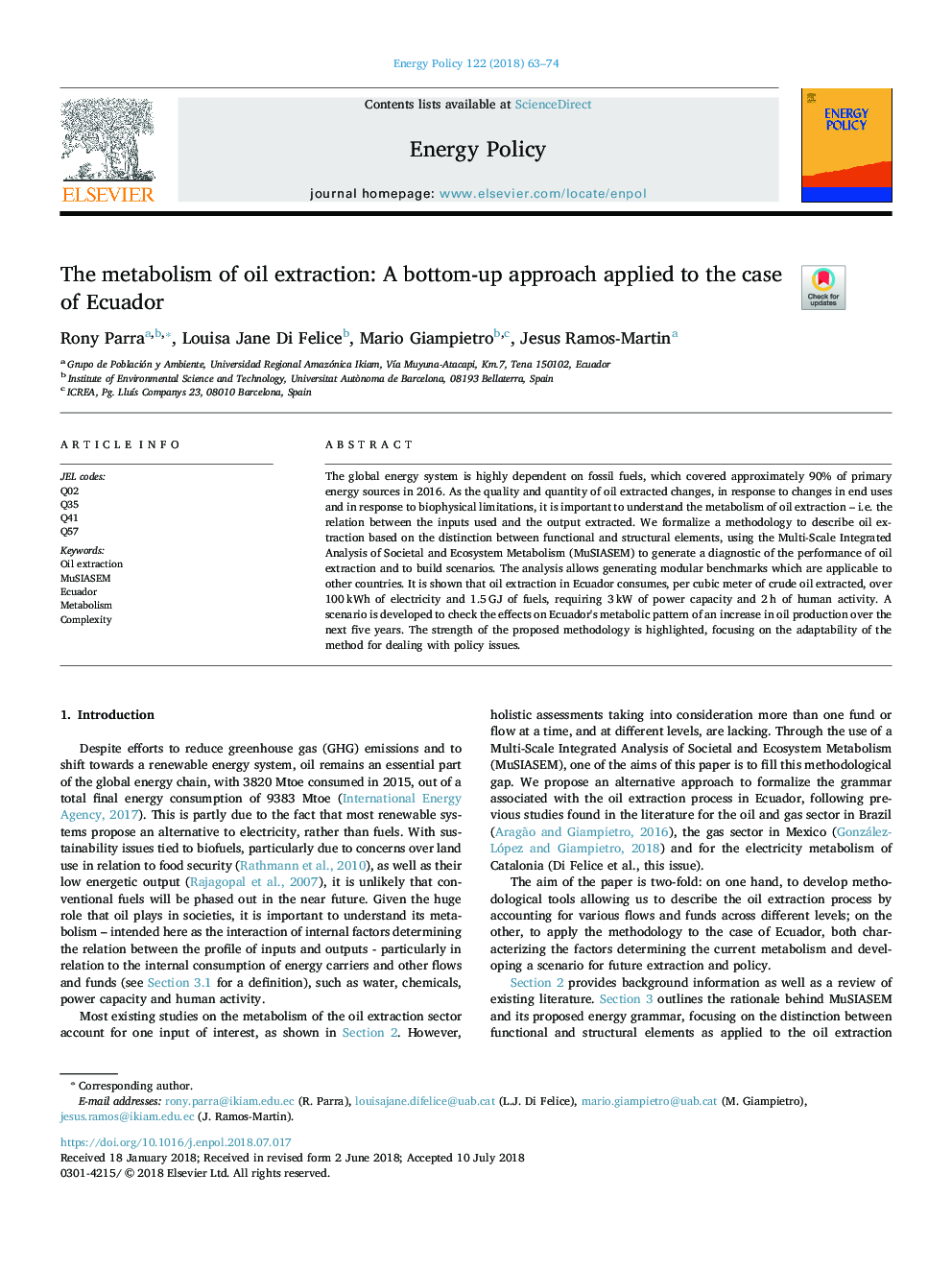| Article ID | Journal | Published Year | Pages | File Type |
|---|---|---|---|---|
| 7396428 | Energy Policy | 2018 | 12 Pages |
Abstract
The global energy system is highly dependent on fossil fuels, which covered approximately 90% of primary energy sources in 2016. As the quality and quantity of oil extracted changes, in response to changes in end uses and in response to biophysical limitations, it is important to understand the metabolism of oil extraction - i.e. the relation between the inputs used and the output extracted. We formalize a methodology to describe oil extraction based on the distinction between functional and structural elements, using the Multi-Scale Integrated Analysis of Societal and Ecosystem Metabolism (MuSIASEM) to generate a diagnostic of the performance of oil extraction and to build scenarios. The analysis allows generating modular benchmarks which are applicable to other countries. It is shown that oil extraction in Ecuador consumes, per cubic meter of crude oil extracted, over 100â¯kWh of electricity and 1.5â¯GJ of fuels, requiring 3â¯kW of power capacity and 2â¯h of human activity. A scenario is developed to check the effects on Ecuador's metabolic pattern of an increase in oil production over the next five years. The strength of the proposed methodology is highlighted, focusing on the adaptability of the method for dealing with policy issues.
Related Topics
Physical Sciences and Engineering
Energy
Energy Engineering and Power Technology
Authors
Rony Parra, Louisa Jane Di Felice, Mario Giampietro, Jesus Ramos-Martin,
